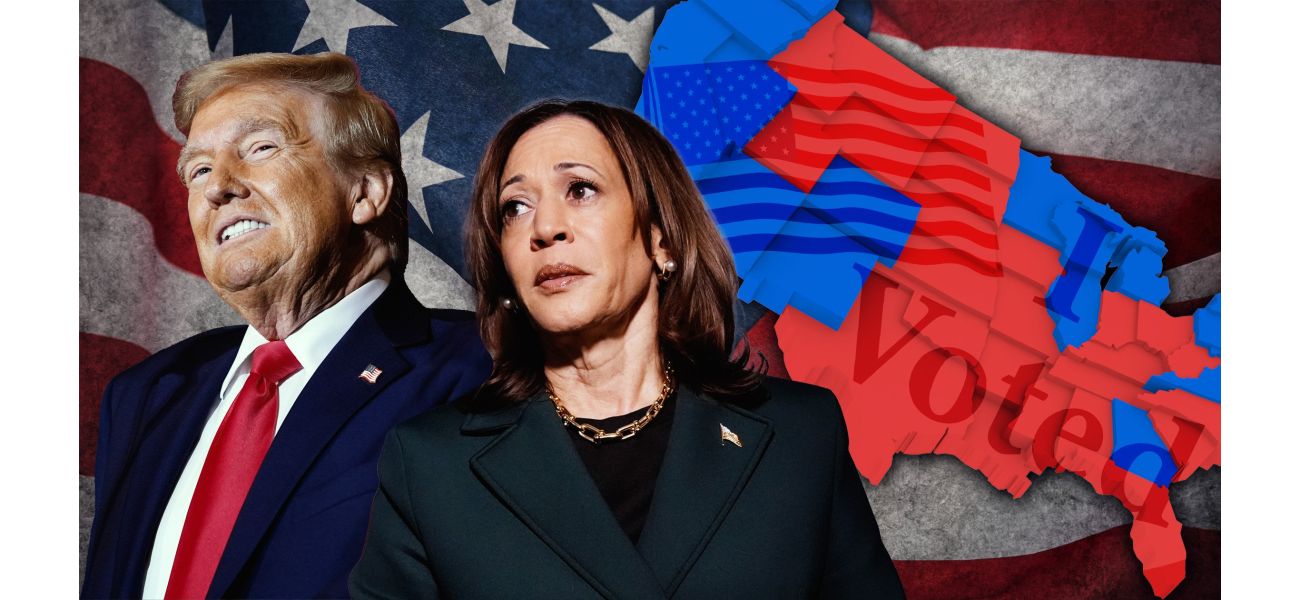Swing states are regions where political parties have similar levels of support, and they are crucial in determining the outcome of an election.
Swing states play a critical role in US elections, frequently determining who becomes president. What's the reason behind this?
October 22nd 2024.

As the 2024 election approaches, a handful of states are dominating the political scene. It's like George Orwell wrote in Animal Farm, "All animals are equal, but some are more equal than others." But instead of animals, let's talk about votes. It's a fitting quote during the US election season, as it highlights the hypocrisy of governments that claim to be fair and just, yet give disproportionate power to a select few.
But aren't all votes equal in an election? Well, in a way they are, but in reality, they aren't. Especially when it comes to the swing states, which play a crucial role in the democratic process. Welcome to American politics, where the swing states hold the key to the White House.
So, what exactly are these swing states? Also known as battleground states, they are the ones where both major political parties have a real chance of winning over the majority of voters in a presidential election. Unlike solidly Democratic or Republican states, which usually lean towards one party, swing states are highly unpredictable and can shift between elections.
Their unpredictability is what makes them so significant. With their electoral votes potentially deciding the outcome of the election and determining who gets to live in the White House for four years, candidates pour all their efforts into winning over the voters in these states. In other words, swing states are where the real election happens.
But why do states matter in US presidential elections at all? Well, it's because of the way the US determines its president. Instead of a simple nationwide count, they use the Electoral College system. Each state is assigned a certain number of electoral votes based on its representation in Congress, with a total of 538 votes to be divided among the 50 states. A candidate needs 270 votes to win.
Most states use a "winner-takes-all" approach, where the candidate with the most votes in a state gets all of its electoral votes. This system greatly elevates the importance of swing states, where even the slightest shifts in votes can determine the outcome and sway a significant number of electoral votes.
And if you thought determining the winner of the Eurovision Song Contest was complicated, think again. The Republican party is hoping they have done enough to convince the swing states to vote in their favor on November 5th. But which states are considered as swing states? Well, it varies over time, depending on voting patterns and demographics. Currently, there are seven states that both Democrats and Republicans agree meet the criteria for being swing states: Nevada, Arizona, Georgia, North Carolina, Michigan, Wisconsin, and Pennsylvania.
So, how do these swing states influence campaigns? Candidates heavily target them, spending a significant amount of time, money, and effort to win over undecided voters. Since these states can go either way, candidates visit them more often than non-swing states and tailor their platforms to appeal to specific voter demographics. It's a highly competitive battle for these key states.
And it's not just talk; the campaigns pour millions of dollars into rallies, ads, and outreach specifically designed for these states. In fact, Kamala Harris and Donald Trump have spent a staggering $210 million on campaign fees in Pennsylvania alone during this campaign, more than twice what they have spent on other swing states. It's no surprise that Pennsylvania remains a primary focus due to its historical significance in determining election outcomes.
But are swing states controversial? It's a question worth asking, as they seem to hold unreasonable power in American elections. The Electoral College gives them more importance than solidly partisan states, almost as if they are being rewarded for being on the fence. However, this set-up often leaves voters in reliably blue or red states feeling ignored and overlooked. It's why there are calls for reform and the abolition of swing states, to give all voters equal influence regardless of where they live.
But despite the controversy, the swing states continue to play a crucial role in US elections, and their swing can determine the outcome of the entire election. By the second week of November, the world will know which way America has swung.
So, what can these swing states tell us about what will happen this year? Well, everything, something, or maybe even nothing. The race is so tight that no polls or experts can offer anything but speculation. We've seen these states sway back and forth in previous elections, making it impossible to predict which way they will go this time. But one thing is for sure, the swing states will swing it, one way or the other.
But aren't all votes equal in an election? Well, in a way they are, but in reality, they aren't. Especially when it comes to the swing states, which play a crucial role in the democratic process. Welcome to American politics, where the swing states hold the key to the White House.
So, what exactly are these swing states? Also known as battleground states, they are the ones where both major political parties have a real chance of winning over the majority of voters in a presidential election. Unlike solidly Democratic or Republican states, which usually lean towards one party, swing states are highly unpredictable and can shift between elections.
Their unpredictability is what makes them so significant. With their electoral votes potentially deciding the outcome of the election and determining who gets to live in the White House for four years, candidates pour all their efforts into winning over the voters in these states. In other words, swing states are where the real election happens.
But why do states matter in US presidential elections at all? Well, it's because of the way the US determines its president. Instead of a simple nationwide count, they use the Electoral College system. Each state is assigned a certain number of electoral votes based on its representation in Congress, with a total of 538 votes to be divided among the 50 states. A candidate needs 270 votes to win.
Most states use a "winner-takes-all" approach, where the candidate with the most votes in a state gets all of its electoral votes. This system greatly elevates the importance of swing states, where even the slightest shifts in votes can determine the outcome and sway a significant number of electoral votes.
And if you thought determining the winner of the Eurovision Song Contest was complicated, think again. The Republican party is hoping they have done enough to convince the swing states to vote in their favor on November 5th. But which states are considered as swing states? Well, it varies over time, depending on voting patterns and demographics. Currently, there are seven states that both Democrats and Republicans agree meet the criteria for being swing states: Nevada, Arizona, Georgia, North Carolina, Michigan, Wisconsin, and Pennsylvania.
So, how do these swing states influence campaigns? Candidates heavily target them, spending a significant amount of time, money, and effort to win over undecided voters. Since these states can go either way, candidates visit them more often than non-swing states and tailor their platforms to appeal to specific voter demographics. It's a highly competitive battle for these key states.
And it's not just talk; the campaigns pour millions of dollars into rallies, ads, and outreach specifically designed for these states. In fact, Kamala Harris and Donald Trump have spent a staggering $210 million on campaign fees in Pennsylvania alone during this campaign, more than twice what they have spent on other swing states. It's no surprise that Pennsylvania remains a primary focus due to its historical significance in determining election outcomes.
But are swing states controversial? It's a question worth asking, as they seem to hold unreasonable power in American elections. The Electoral College gives them more importance than solidly partisan states, almost as if they are being rewarded for being on the fence. However, this set-up often leaves voters in reliably blue or red states feeling ignored and overlooked. It's why there are calls for reform and the abolition of swing states, to give all voters equal influence regardless of where they live.
But despite the controversy, the swing states continue to play a crucial role in US elections, and their swing can determine the outcome of the entire election. By the second week of November, the world will know which way America has swung.
So, what can these swing states tell us about what will happen this year? Well, everything, something, or maybe even nothing. The race is so tight that no polls or experts can offer anything but speculation. We've seen these states sway back and forth in previous elections, making it impossible to predict which way they will go this time. But one thing is for sure, the swing states will swing it, one way or the other.
[This article has been trending online recently and has been generated with AI. Your feed is customized.]
[Generative AI is experimental.]
0
0
Submit Comment





